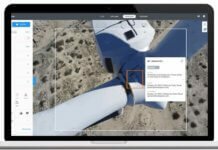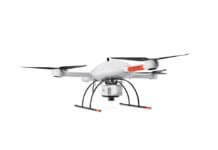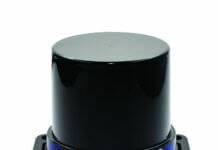The emerald golfing greens have seen better days. According to the U.S.’ National Golf Foundation, the number of players has almost steadily declined from over 30 million in 2005 (pre-recession) to 24.7 million today. In addition, 680 U.S. and 158 Canadian courses have closed.
Drone technology and mapping software are two technologies that have the potential to create more efficient and attractive courses. Pix4D interviewed tech industry stakeholders to see where drone mapping can apply to golf.
Design
Drone mapping – or 3D surveying conducted via drone imagery and mapping software – provides relevant visual and quantitative information for golf course planning. Microsoft recently stepped in this direction with its development of Microsoft Course IQ.
“It’s an application built for learning how technology can improve golf course design,” explains Stefan Gordon, principal software engineer at Microsoft, who worked on the app. Engineers took 10,000 aerial photos of four top U.S. golf courses; then, using Pix4Dmapper Pro, they reconstructed detailed 2D and 3D maps of them using Pix4Dmapper Pro.
“Combined with other datasets and machine learning technology,” says Gordon, “the tool provides deep insight into these courses.”
A landscape designer, for example, could use Course IQ to access data on the Plainfield Country Club course in New Jersey – getting not only accurate 3D models and topography maps from Pix4D but also information on soil composition or bedrock depth.Such maps can also be used during the design process to determine elevation and flood risk: Christopher Haddad of Jamaica UAV did this with his drone mapping data of the Tryall Estate Golf Course in Jamaica (see below image).
Maintenance
Roughly 25%-35% of total club revenues go toward maintenance costs. By using 3D models of a course, management can better monitor the green and conduct hole-by-hole analysis, especially for large courses.
Kevin Barba, co-founder of Summit Drones, states that the 3D golf course models he provides give owners more control over their course.
“They can now – for instance – look at that stubborn pine tree on hole #4 and, using Pix4D software, accurately calculate the height and width of the tree and estimate the weight of the tree and the cost and time it would take to remove it,” says Barba, who also uses the workflow to help monitor fairway health in order to calculate upkeep costs of different seasons.
Microsoft engineer Gordon identifies maintenance as a key reason to 3D map golf courses.
“We’ve seen interest from course owners in detailed contour mapping,” he says, “so that they can ensure a famous course is maintained in a historically accurate way after many years have passed.”
Marketing and communication
As part of their online marketing and communication strategy, golf course owners are adopting interactive 3D models as a tool to engage their audiences in a process of discovery. Imagine trying to decide on a golf destination, says Barba, if you are hundreds of miles away and want to spend one day golfing your dream course.
“Aerial 3D mapping is a powerful tool that can do everything,” he says, “from giving the customer that virtual experience to feel like they know the golf course and have played it.”
One marketing strategy of 3D models, mentions David Field of Drone Tech Aerospace Ltd., is to promote the club with a promotional video and aerial photographs – “to allow their club members and potential members to preview the course virtually.”
Game-planning
Last but not least, golf is, of course, a game – and players need tools to define a strategy. With accurate, interactive 3D models, golfers plan their rounds in advance: preparing their approach to each hole before they actually step on the green.
In Barba’s words, “Utilizing photogrammetry and 3D mapping gives golfers the ability to know every blade of grass and grain of sand on the course so they are confident and prepared for a great day on the green.”
Microsoft Course IQ is taking game-planning to the next level. A golfer navigating the 3D or topographic model of a golf resort can access multiple information layers, such as the current temperature, sunlight, and wind conditions.
As photogrammetry and drone-based services advance, there are new 3D mapping territories to discover.











I am really interested in doing mapping for golf courses. I have all the equipment and now I am calling on Superintends and Architects . I just have to start practicing how to map. It is not rocket science and most of the software today flies the quad for you. Is it recommended to allow the software like Drone deploy to do it or do it manually?